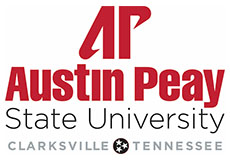 Clarksville, TN – The Austin Peay State University (APSU) GIS Center recently collaborated with Habitat for Humanity of Montgomery County to design a virtual home tour using state-of-the-art camera equipment.
Clarksville, TN – The Austin Peay State University (APSU) GIS Center recently collaborated with Habitat for Humanity of Montgomery County to design a virtual home tour using state-of-the-art camera equipment.
The tour uses a recently built home as a model to showcase Habitat’s basic floor plan, which has been used with small variations since 1992. Community members can experience it through virtual reality or a web browser.
“We have these cameras that allow us to do very detailed indoor scans of buildings, and we were looking for projects to pilot their use,” said Mike Wilson, the director of Austin Peay State University’s GIS Center. “I think this was an amazing opportunity because people in the community can actually take a tour and see these homes. You hear a lot about Habitat’s work, but seeing it is a completely different experience.”
Rob Selkow, the executive director of Habitat for Humanity of Montgomery County, said the tour is another way for the nonprofit to share its story with the community. Each build is funded through sales from the Habitat for Humanity ReStore, and the organization provides zero-interest loans through a competitive program to help families purchase the homes.
“I think a virtual tour lets people take some mental ownership of what it’s like to walk into the kind of house we’re partnering with them on,” Selkow said. “This is not just for future homebuyers – we also want donors and volunteers who are interested in helping with Habitat to know what standard we’re expecting.”
Designing the Tour
Senior psychology major Robert Taylor, a temporary worker at the APSU GIS Center, created the tour and gained practical experience using the center’s new camera equipment along the way.
“What we did was take a 360-degree camera and moved it from one spot to another to take pictures,” he said. “Then we brought it back here and converted everything with [the virtual tour software] Pano2VR.”
Taylor said working on the project also strengthened his ability to handle unexpected real-world challenges.
“It’s put me in a lot of different situations that I wasn’t used to figuring out before,” he said. “Troubleshooting on the job is something I’ve had to do in a small aspect, but not on this scale … being able to adapt to that is helpful, and working in and around the community has helped with my communication skills.”
“Austin Peay made us feel like really important clients,” Selkow said. “It really mattered to them that they got it right and that we felt good about what they were providing. They really gave us the VIP treatment, and we’re so grateful to have them help advance Habitat’s mission through their unique storytelling ability.”
Looking to the Future
With the virtual home tour completed, the GIS Center plans to continue using its new technology to benefit Austin Peay’s campus and the surrounding community.
“It’s possible to do video like this, so we’ve talked about the possibility of working with people on campus to do virtual lectures,” Wilson said. “Imagine that you’re sitting in the lecture hall, and you can look around as the professor’s talking. You can even see a student next to you raise their hand and ask a question.”
The team is also gathering 360-degree scans of Austin Peay State University’s classroom spaces and infrastructure to optimize campus maintenance, and exploring a pilot program with Montgomery County Engineering that could help the county’s EMS service renovate one of their stations.
“One of the big things that affects any larger organization is infrastructure management,” Wilson said. “Mapping indoors is difficult because you don’t have access to GPS, so having accurate scans and measurements opens up a lot of possibilities.”



